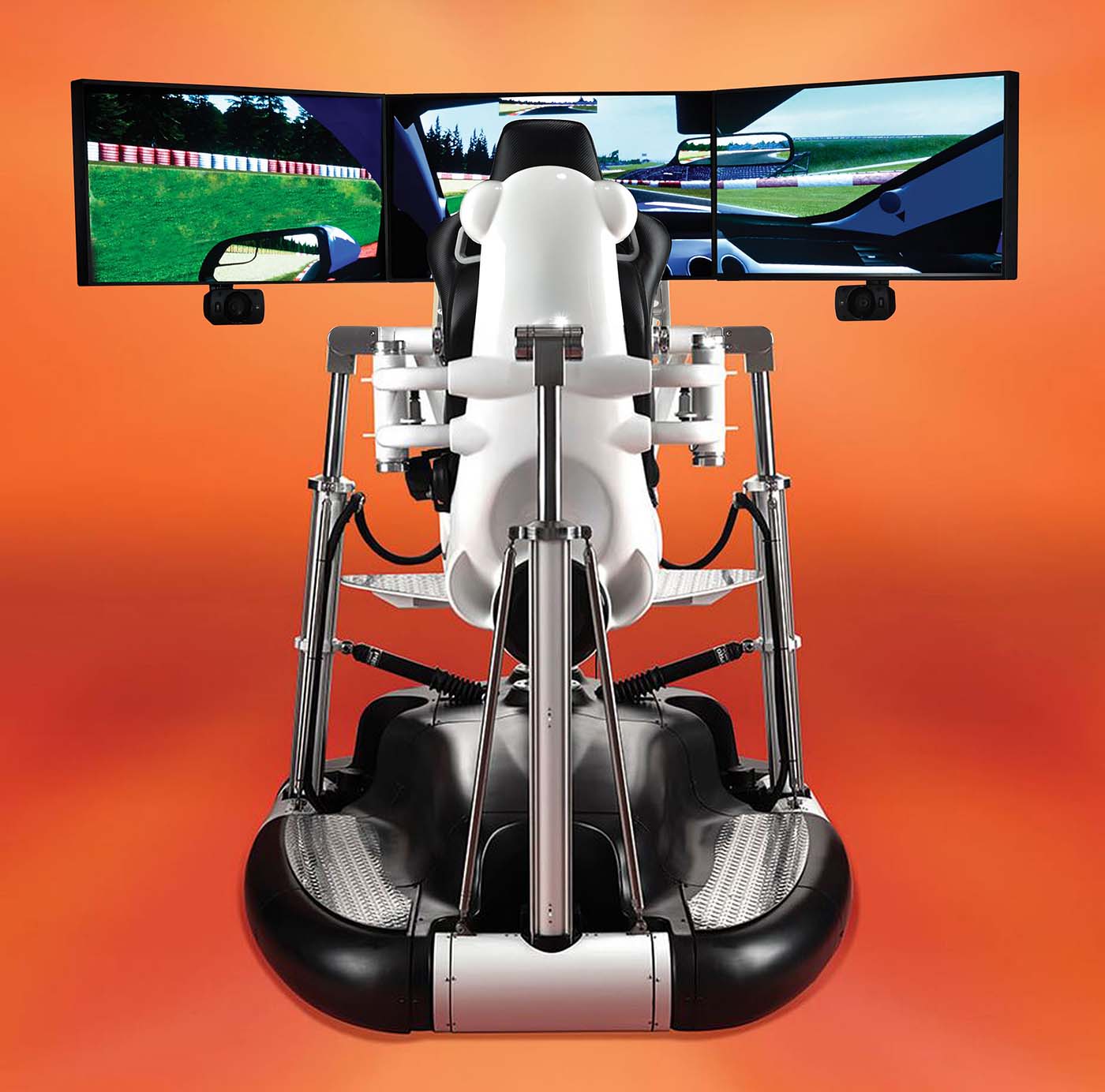
The Final Step
We are facing the final step of simulation, the "top of the range" for anyone who dares to challenge the limits of reality and sensations. Talking about motion systems already says a lot—not only because of their complexity and wide range of possibilities but also due to the significant investment this addition entails.
These "gadgets" are among the most expensive accessories you can add to your simulator and enjoy great popularity online due to the spectacular videos they star in. However, not everything is praise for these systems; the large sums of money they cost are not always justified, and they may not offer a minimum level of quality relative to their price. Their exclusive use by a minority seeking the best sensations leads companies that market them to impose exorbitant prices.
Yet, this peripheral, capable of delivering great sensations, is attracting more and more simracing enthusiasts who want to enhance and implement components in their simulators that add realism and allow them to feel every inertia of a car. At the same time, numerous companies worldwide showcase their diverse systems, which, to a greater or lesser extent, will provide that "extra" sensation to our simulator, helping us fully connect with the car and immerse ourselves in the race.
HOW DO THEY WORK?
All motion systems operate on the same principle: software on a computer extracts various parameters from the telemetry of simulation games. This program then interprets the results, assigning them to axes that represent the spatial position of the vehicle's cockpit and its acceleration parameters.
Once the game’s motion is calculated, the information is recorded in the corresponding axis of the software. This is then sent via data packets to the motor driver, which, through a controller board, registers and reproduces each of the positions dictated by the aforementioned axes, thus generating motion. We could say that the software acts as an intermediary between the information extracted from the game and the motor driver responsible for physically reproducing the movements.
This process repeats several cycles per second for each axis the simulator has, resulting in a series of specific movements or positions in the cockpit based on accelerations, decelerations, or how we turn the steering wheel in the game.
Regarding software, there are different telemetry extraction systems—some paid, like Sim Commander from SimXperience, and others free but more complex, such as Sim Tools or X-Sim.
HOW DOES IT FEEL?
One question many of you might have is whether the investment is worth it and if it truly feels realistic.
From my perspective, there’s a set of priorities for achieving immersion in a cockpit: Beyond having a stable and adjustable cockpit with its steering wheel and pedals, I’d say a virtual reality headset is essential to feel inside the car. Next would come a good seat vibration system (bodyshakers) to properly sense engine revolutions, bumps, curbs, etc., and finally, the motion system would come into play to provide more information about the G-forces generated in the vehicle.
WHAT DOES IT FEEL LIKE WITH A MOTION SYSTEM?
Assuming a well-configured software setup that perfectly emulates the car’s reactions with almost no lag, the sensation is impressive. However, there are some details to consider:
The use of new virtual reality headsets makes a motion system even more immersive than before when using one or three screens. Since you can’t see the surroundings of the cockpit, you feel inside the car and don’t lose focus, plus your brain forgets it’s in a static room.
It’s recommended that the actuators/motors move quickly but with limited range. This makes driving more comfortable and avoids exaggerated movements that could interfere with our hand and foot inputs.
Very importantly, attaching a safety harness to a fixed point at the back of the cockpit is key so that when braking or turning side to side, it slightly tenses the upper body. This way, we’ll feel something similar to what happens in a real car—being pressed into the harness when braking. This adds incredible realism that the brain loves.
It’s worth noting that a motion system will never fully replicate the real G-forces (inertia) of a race car, but even so, the driving experience, following the guidelines above, is excellent.
WILL IT MAKE ME FASTER?
Probably not, but although these systems aren’t directly tied to a driver’s ability to improve their lap times, they do play a psychological role. A driver who feels comfortable and believes they’re experiencing the car’s every movement is a more focused and engaged driver in the race.
In driving simulation, we’ve all seen young people with a 19” monitor, a computer desk and chair, and budget pedals and steering wheel achieve incredible lap times on certain car/track combinations. But since not all of us are “aliens” at simulation, some of us need to feel the vehicle’s effects more realistically to react properly to them.
This way, you become more connected to the car, anticipate uncontrolled movements, and ultimately understand it better, leading to tangible improvements in driving—within the driver’s limits.
So, it can be said that with such systems, combined with virtual reality headsets, vibration systems, and quality accessories like steering wheels and pedals, a simracer can reach their maximum driving potential more quickly.
